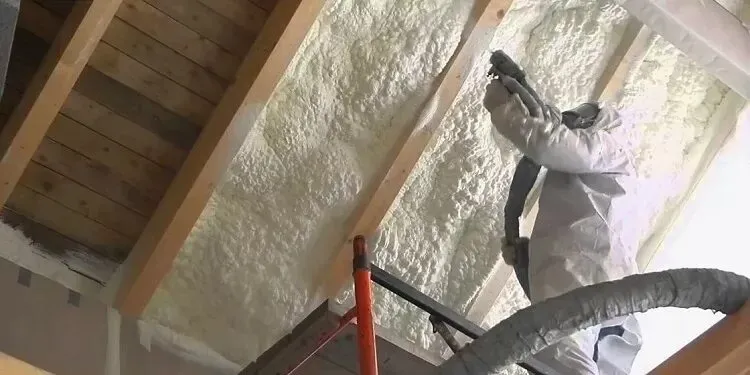Spray foam insulation has become a popular solution for sealing gaps around windows due to its efficiency in preventing air leaks, reducing energy costs, and enhancing overall comfort. However, a common question homeowners ask is: how long does window spray foam last? Understanding the lifespan of spray foam insulation is crucial for maintenance, long-term planning, and maximizing its benefits. This guide explores the durability of window spray foam, factors that affect its longevity, and how to extend its effectiveness.
Lifespan of Window Spray Foam
General Longevity
Window spray foam insulation is designed to last for 20 to 30 years under normal conditions. Unlike traditional sealants like caulk, spray foam forms a rigid structure that adheres well to surfaces, providing long-lasting performance.
Factors Affecting Lifespan
Several factors can influence the durability of spray foam insulation, including:
- Quality of Application: Proper installation ensures a tight seal and optimal performance.
- Environmental Conditions: Extreme temperatures, UV exposure, and moisture can degrade foam over time.
- Foam Type: Closed-cell spray foam tends to last longer than open-cell foam due to its denser structure.
- Maintenance: Regular inspections help detect early signs of deterioration and prevent premature failure.
Types of Window Spray Foam and Their Durability
Open-Cell vs. Closed-Cell Foam
| Type | Density | Lifespan | Best Use Cases |
| Open-Cell Foam | Less Dense | 20-25 Years | Interior applications, soundproofing |
| Closed-Cell Foam | More Dense | 30+ Years | High-moisture areas, structural reinforcement |
- Open-cell foam is lightweight and more flexible but is less resistant to moisture.
- Closed-cell foam is rigid, more durable, and better suited for areas exposed to harsh weather conditions.
Key Benefits of Window Spray Foam Insulation
Energy Efficiency
Spray foam significantly improves energy efficiency by reducing drafts and heat loss. This contributes to lower heating and cooling costs throughout the year.
Moisture Resistance
Closed-cell spray foam acts as a moisture barrier, preventing water infiltration that can lead to mold growth and wood rot around windows.
Air Sealing Capability
Properly applied spray foam creates an airtight seal, reducing the chances of air leaks and enhancing indoor comfort.
Signs That Window Spray Foam Needs Replacement
Over time, even high-quality spray foam may deteriorate due to environmental exposure. Some common signs of aging include:
- Cracking or Shrinking – Indicates breakdown due to prolonged exposure to temperature fluctuations.
- Discoloration – Yellowing or dark spots can signal UV degradation.
- Loss of Adhesion – Foam pulling away from window frames suggests improper installation or aging.
- Increased Energy Bills – A sudden rise in heating and cooling costs might mean insulation efficiency has declined.
How to Extend the Lifespan of Window Spray Foam
To ensure that window spray foam lasts as long as possible, consider these maintenance tips:
Proper Installation
- Hire a professional installer to ensure a seamless application and avoid air gaps.
- Choose high-quality foam products designed for long-term performance.
Protection from UV Exposure
- Apply a UV-resistant coating over exposed foam to prevent degradation from sunlight.
- Use window trims or covers to shield foam from direct exposure.
Regular Inspection & Maintenance
- Check for signs of wear every few years.
- Reapply or patch small areas if foam begins to crack or shrink.
- Ensure proper ventilation around windows to minimize condensation buildup.
Common Myths About Spray Foam Longevity
“Spray Foam Never Degrades”
While spray foam is highly durable, it does not last indefinitely and can deteriorate under extreme conditions.
“More Foam Means Longer Lifespan”
Applying excessive foam does not necessarily increase durability. Proper thickness and installation matter more than sheer quantity.
“All Spray Foams Are the Same”
Different formulations exist, and closed-cell foam is far superior for longevity compared to open-cell foam in high-moisture environments.
Cost Considerations for Window Spray Foam Insulation
Initial Investment vs. Long-Term Savings
| Expense | Cost Range |
| Spray Foam Material | $0.50 – $2.00 per sq. ft. |
| Professional Installation | $200 – $500 per window |
| DIY Kit | $50 – $200 |
While the initial cost of spray foam may be higher than traditional caulk or fiberglass insulation, the long-term energy savings and durability make it a worthwhile investment.
Conclusion
Window spray foam insulation is a long-lasting, energy-efficient solution for sealing gaps around windows. With a lifespan of 20-30 years, it outperforms traditional sealing materials, making it a valuable investment for homeowners. Regular inspections and proper installation can help maximize its longevity. For those looking to enhance their home’s insulation with professional-grade spray foam, Excel Spray Foam provides top-quality services in Plano, TX.
Get Professional Spray Foam Installation in Plano, TX
Contact Excel Spray Foam today for expert installation and long-lasting insulation solutions. Their team of professionals in Plano, TX, ensures high-quality applications that improve energy efficiency and indoor comfort. Contact them now to schedule a consultation or request a quote!
FAQs
How often should window spray foam be replaced?
Spray foam can last 20-30 years, but it should be inspected every 5-10 years for any signs of wear or degradation.
Can I install spray foam around the windows myself?
Yes, DIY kits are available, but for optimal longevity and efficiency, professional installation is recommended.
Does spray foam insulation shrink over time?
Some low-quality or improperly applied spray foams may shrink, but high-quality closed-cell foam maintains its structure for decades.
Is spray foam insulation resistant to mold?
Yes, closed-cell spray foam resists moisture and mold growth better than many traditional insulation materials.
Does spray foam affect indoor air quality?
Properly cured spray foam is safe and does not release harmful chemicals. Ventilation during installation is essential.
Can spray foam insulation be removed and replaced?
Yes, old or damaged spray foam can be cut away and reapplied to maintain performance.
What is the best type of spray foam for windows in humid climates?
Closed-cell foam is ideal for humid climates as it resists moisture and provides a stronger air seal.
Can spray foam be painted over?
Yes, spray foam can be painted using water-based paints to enhance its appearance and UV protection.
Does spray foam insulation expand over time?
No, spray foam expands immediately during application but does not continue to expand after curing.
Is window spray foam worth the investment?
Yes, window spray foam offers long-term energy savings, durability, and improved indoor comfort, making it a cost-effective insulation solution.



